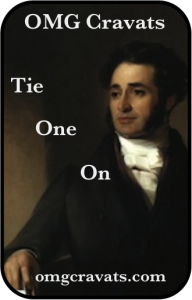
I've got a somewhat irregular Saturday ritual of listening to recent NPR show episodes while knitting, or winding yarn, or just cleaning house. Not long ago, I added Len...
I keep having this picture in my mind of arts organizations huddled up, frantically flipping through some metaphorical 21st century audience development playbook, trying to figure out the perfect combination of plays that will win over younger audiences: Should we get rid of subscriptions? Stream podcasts? Produce videos for YouTube? Hire DJs and VJs to play in the lobby after the show? Have a MySpace page? Text our patrons on their cell phones? Remake the season brochure? Host some sort of amateur art competition?
Maybe! But we can’t answer these questions until we answer some more fundamental questions. Yes, we need to bring our marketing into the 21st century; but first, we need to bring our missions into the 21st century. This is less a failure to sell well, and more a failure to see well - a failure to see that our communities have changed, and that art and artists have changed, and that we, perhaps, as institutions that exist to broker a relationship between the two (communities and artists) have not changed in response.
-from a keynote address by Diane Ragsdale to the Australia Council Arts Marketing Summit, July 2008
Nina Simon at Museum 2.0 linked to Ragsdale's remarks tonight, and I am profoundly grateful that I decided to take the time to read the transcript of this keynote address to the attendees of the Arts Marketing Summit of the Australia Council for the Arts.
It's long, yes, but trust me, read it.
After observing that arts organizations have spent the better part of the last few decades increasing capacity, professionalizing staff, and building new facililties, Ragsdale notes that the demand for what arts organizations are supplying continues to decline.
She proposes some intriguing remedies to the situation, remedies that go beyond marketing and communications, and even beyond adding programming that is thought to be more "relevant" to the younger audiences organizations seek to enlist. Instead, Ragsdale suggests a rethinking of art spaces themselves, and a reconsideration of our assumptions about what it means to be an arts organization:
The Internet has given everyone with access the tools to create and distribute their own art. Arts organizations could become mentors, resource providers, or sources of content that could be re-purposed by amateur artists. Or they could invite pro-am artists to submit artistic work that could be displayed on their Web sites as a way of building community — and, who knows, maybe even finding new talent or new programming ideas.
And she takes the industry to task for maintaining -- or trying to maintain -- an outdated model of proprietary control over product that ultimately serves neither patron nor institution:
The rule on the Internet is: sampling is free. You can listen to an entire CD before you purchase it. In order to reach broader audiences arts organizations need to create free and low-cost opportunities for people to sample and share their art through mediated and live experiences with others.... This is not about top-down control from arts organizations; it’s about allowing patrons to be active participants and turning them into devoted fans and catalysts for participation by others—in other words, driving word of mouth. When the Walker Art Center in Minneapolis presented the group GobSquad last year, they were amazed to find that one of their young patrons went home that night and made a video response to the piece and posted it on YouTube. They began thinking, “How do we generate more of this?” which is the exact right question to ask.
Diane Ragsdale is an Associate Program Officer for the Andrew W. Mellon Foundation, a grant-making organization in New York that supports the arts and culture sector.
And I wish she wrote a blog.
Perhaps it’s time for us to stop waiting for people to find us, to appreciate us, and instead move toward them; seek to understand them; break into their hearts and minds—in that order.
I think that one of the reasons why people in arts organizations are excited about using all the various social media tools is because we see that this is precisely the sort of movement towards the audience that these technologies facilitate.
One of the truisms I've seen repeated over the last few months is that the most exciting, innovative, and ultimately game-changing start-ups often get their start during economic downturns. I was trained as a paleontologist, and this sounds to me like the sort of evolutionary opportunism that takes place during and just after a mass extinction.
Niches become emptied out, and new species fill them in new ways, sometimes collapsing several niches into one, sometimes segmenting niches out into several new ones. It depends on what adaptive technologies are available and emerging at the time.
It will be very interesting to see what new forms emerge from this period of upset and turmoil. Some dinosaurs will fade; some wily new creatures will seize the opportunity. Which course will your favorite cultural organization follow?

I've got a somewhat irregular Saturday ritual of listening to recent NPR show episodes while knitting, or winding yarn, or just cleaning house. Not long ago, I added Len...

Well knock me down. Looks like I'm not the only one with a little fetish for a good looking man in a cravat.